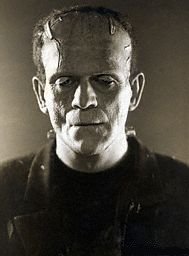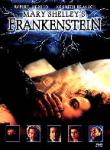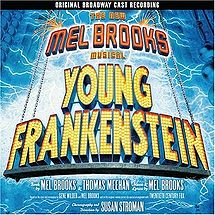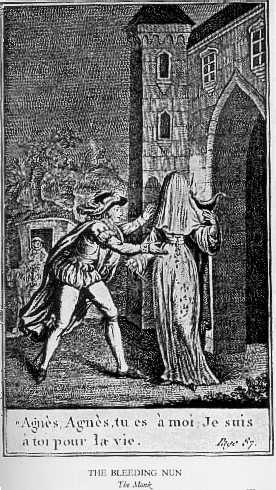|
Literature 110 - Popular Literature Spring 2013 - Ticket #62740 // Marjorie Coverley Luesebrink, MFA, Instructor |
|
Unit 2: Horrors!
Frankenstein, Mary Shelley Lecture Introduction: By now you should be well into Mary Shelley's Frankenstein-The Modern Prometheus (1818). [Please read each lecture before you start the book - I promise, no spoilers!] In terms of "popular" - Mary Shelley's creation may be the most "recycled" of any horror/science fiction idea ever - it is widely credited as both the first horror novel AND the first Science Fiction novel. We are going to consider it in the Horror Genre for our purposes, but we will also look at the Sci-Fi genesis and the legacy that it provided. *Frankenstein* epitomizes the blend of scientific speculation, gothic horror, and personal responsibility that makes for a remarkable tale. In the same way that the patchwork corpse of the Monster is brought to life - the story seems to be re-electrified almost every decade and sometimes more often! The first "rip-off" of Mary's story took place as early as Richard Brinsley Peake's play Presumption in 1823. In those days, there was nothing like a copyright law, so Peake just picked up all of the ideas he wanted from Mary's novel, which was a roaring success, and wrote his own dramatic version!
The Definitive Chronological List from UPenn. A Selected List Below -
As you read through these movie descriptions and look at the clips, notice how many variations of the story have been invented! And, to demonstrate that the ongoing fascination with the Monster continues, we have a new novel coming out in 2009 that takes up the whole group - including Mary and Percy - once again. The Casebook Of Victor Frankenstein, by Peter Ackroyd, Chatto & Windus, 296pp, $32.95. Here is an excerpt from a review of the novel by Richard King - Conceived in the summer of 1816 at the Villa Diodati on Lake Geneva, Frankenstein is a novel for all seasons. It's as if this story of a revivified corpse were itself predestined to be brought back to life at intermittent intervals. Peter Ackroyd's enjoyable romp, The Casebook Of Victor Frankenstein, is the latest incarnation of the legend, one that attempts to reproduce the slightly breathless narrative style of Shelley's original gothic romance. But while there are similarities of style, there are conspicuous dissimilarities of plot. For example, the author has relocated most of the action from Europe to London, a change that allows him fully to exploit his considerable expertise in that area (his London: The Biography was published in 2000 and The Thames: Sacred River in 2007). The other big change is that Ackroyd has incorporated real figures into the story. Thus, both Mary and Percy Shelley are intimately involved in the story. Indeed, the first 100 pages of the novel read like a who's who of romantic England. Thomas Hogg, Humphry Davy and Samuel Coleridge all make appearances. As we study Popular Literature, we can ask several questions about a text. We are often curious about how a story emerged - the background that produced the author and the tale. Also, we want to know how and why certain books capture and hold the public imagination. Another set of questions revolves around the literary techniques and structures of the book. And, finally, we hope to gain some insight into the general meaning of even the lightest popular fiction.
Literary Background This novel has come to be seen as a popular “classic” – as such, we know that it was written long, long ago (1818) and continues to have dozens of imitators (see above intro). Moreover, one of the signs of a classic text is that it makes its way into the public, general imagination, even for people who have not read it. For example: Lots of folks haven’t actually read Treasure Island, but almost everyone recognizes the images that the novel introduced into our collective imagination – the salty old pirate with a wooden leg, the parrot, the buried treasure, and so forth. Disney movies, too, often draw on literary classics (and sometimes just appropriate the classic itself) to utilize a vocabulary of images that are common in the culture and thus have built-in power. [Take a close look at the Pirate referents in all of the *Pirates of the Caribbean* spin-offs!] Another example: The Disney media versions of Pocahontas don’t actually depict
what a daughter of the Algonquian Indians in the Tidewater region of
Virginia would have probably worn.
Rather, we have Pocahontas dressed in a very abbreviated
“Hiawatha” style – because Americans like to have their aborigines
dressed in fringed, creamy leather rather than grass skirts.
(You take your pick, hot and steamy Virginia swamp, I would
choose grass!) I mention these two instances of collective popular imagination because the images are familiar to you, most likely. And so, we think, are the familiar icons of a creature that is mistakenly called 'Frankenstein.' However, the influence of Dr. Frankenstein's Monster is persistent in many more ways – we just don’t notice the links as clearly. Mary Shelley's book tends to inform much of what we have come to know as the Horror story! As we proceed to look closely at the text, its background, and its legacy – see if you can trace other ways in which the ideas of Frankenstein (the novel) have become a part of our culture.
We are starting with the Horror story because Mary Shelley's Frankenstein was one of the first text examples of the creation of a "new" genre that became immediately popular in a big way! As we saw in the Introduction to Popular Literature, stories that featured Romance, War, Ghosts and Horror, and Wild Adventure have existed since the beginning of history as we know it. Many of the stories we read today can be traced to their roots in Mythology or Folklore - and, in turn, many of the oral tales of Myth and Legend were eventually written down. As written narratives, they were very popular among a small number of people who could read in centuries past. And the oral versions of those tales continued to be told around the hearth - and continue today to be told around campfires and where-ever traditional spoken stories are heard. This is true of Horror stories, as well. Horror tales - or some version of them - can be found in ancient mythology. Our first clue, of course, is the subtitle of the book "The Modern Prometheus." From the My Hideous Progeny Website, this description of the meaning of the title: The subtitle The Modern Prometheus refers to the figure in Greek mythology who was responsible for a conflict between mankind and the gods. In order to help the people, Prometheus stole Zeus's fire from the sun. The people were thereby given an advantage to the animals since fire gave man the ability to make weapons and tools. Prometheus was severely punished by Zeus who chained him to a rock in the Caucasus. Every night, Prometheus was visited by an eagle who ate from his liver. During the day, however, his liver grew back to its original state.It also refers to the story of Prometheus plasticator who was to said to have created and animated mankind out of clay. These two myths were eventually fused together: the fire that Prometheus had stolen is the fire of life with which he animated his clay models. When we look at the graphic above (egad! the Incubus ravishing a helpless female) we are also reminded of myths such as that of Demeter (see abduction of Persephone), where her daughter is given by Zeus to Pluto, the awful god of the underworld. Among the categories of folklore that might be included in "horror" stores would be ghost stories, zombie stories, werewolf stories, tales of the living dead, and so forth!
Romance vs. the Romantic Movement in Literature: The genre category that we will be studying for Romance Genre in Popular Literature (that is - love stories) seems to follow in the tradition of the "Romances" of the Middle Ages. However, the "Romantic Movement in Literature" doesn't come until the end of the 18th Century - and it covers a far wider set of themes and sensibilities. *Frankenstein* is written under the influence of this Romantic Movement in Literature and closely follows the concerns and motifs of one of its chief elements - The GOTHIC SENSIBILITY. Forerunners of Mary Shelley: the Gothic Sensibility The Gothic Sensibility is part of the Romantic Movement in general, and in the case of literature, tends to be a forerunner of the full-blown Romantic Movement that includes the names we are familiar with - Byron, Keats, Shelley (Percy), and so forth (men). The kind of Romanticism that arose at the end of the 18th Century is not the romance genre writing that we associate with "bodice rippers" of today, although they are distantly related. The Romantic Movement of two centuries ago took a rather well-defined position against "rationalism" - and works tended to stress the following: Romanticism emphasized the individual, the subjective, the irrational, the imaginative, the personal, the spontaneous, the emotional, the visionary, and the transcendental. Among the characteristic attitudes of Romanticism were the following: a deepened appreciation of the beauties of nature; a general exaltation of emotion over reason and of the senses over intellect; a turning in upon the self and a heightened examination of human personality and its moods and mental potentialities; a preoccupation with the genius, the hero, and the exceptional figure in general, and a focus on his passions and inner struggles; a new view of the artist as a supremely individual creator, whose creative spirit is more important than strict adherence to formal rules and traditional procedures; an emphasis upon imagination as a gateway to transcendent experience and spiritual truth; an obsessive interest in folk culture, national and ethnic cultural origins, and the medieval era; and a predilection for the exotic, the remote, the mysterious, the weird, the occult, the monstrous, the diseased, and even the satanic. The Gothic novel dominated English
literature from its conception in 1764 with the publication of The
Castle of Ortanto by Horace Walpole has been continually criticized
by numerous critics for its sensationalism, melodramatic qualities, and
its play on the supernatural. Please read this description of Gothic Architecture and Gothic Literature! Image from the Gothic Lit. pages of Franz Potter -
Graphic of "The Bleeding Nun" While the Gothic Sensibility faded for a short while - by late Victorian times it was back, and it has continued to inform the Horror Genre in Popular Literature! Today, it is one of the most popular movie genres! The second important aspect of *Frankenstein* is the fact that it is also considered the first Science Fiction novel. Ahead: go on to Science becomes Science Fiction (1800)
other topics we will cover "Readable" Characters Patterned Structure Reassuring Plot Clear-cut Value System Mythological and Folk Referents Intimacy of Style and Tone
MENUBAR: About Your Class // Class Syllabus // Lecture Notes // Reading List // Recommended Reading // Assignments // Grading Policies // Contact Your Instructor // Announcements // Discussion
Marjorie Coverley Luesebrink, your Instructor, is a Professor of English in the School of Humanities and Languages Irvine Valley College, Irvine, California
|
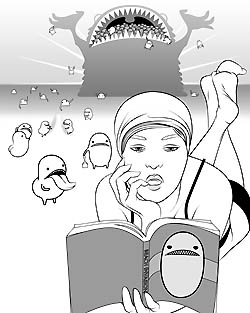 Irvine Valley College
- Online Literature Study of the School
of Humanities and Languages
Irvine Valley College
- Online Literature Study of the School
of Humanities and Languages
